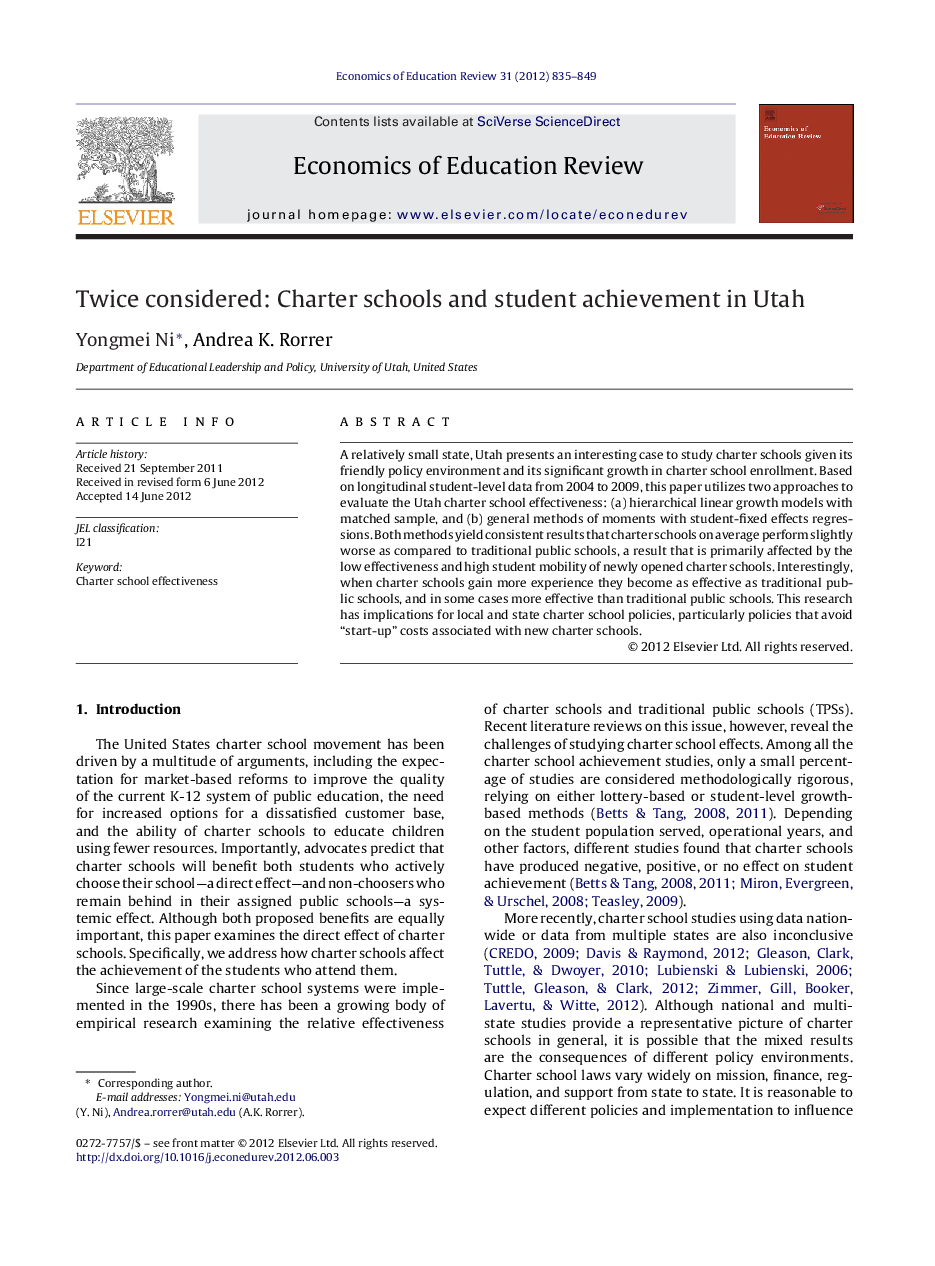| Article ID | Journal | Published Year | Pages | File Type |
|---|---|---|---|---|
| 354448 | Economics of Education Review | 2012 | 15 Pages |
A relatively small state, Utah presents an interesting case to study charter schools given its friendly policy environment and its significant growth in charter school enrollment. Based on longitudinal student-level data from 2004 to 2009, this paper utilizes two approaches to evaluate the Utah charter school effectiveness: (a) hierarchical linear growth models with matched sample, and (b) general methods of moments with student-fixed effects regressions. Both methods yield consistent results that charter schools on average perform slightly worse as compared to traditional public schools, a result that is primarily affected by the low effectiveness and high student mobility of newly opened charter schools. Interestingly, when charter schools gain more experience they become as effective as traditional public schools, and in some cases more effective than traditional public schools. This research has implications for local and state charter school policies, particularly policies that avoid “start-up” costs associated with new charter schools.
► This study examines Utah charter school effectiveness. ► We use two approaches: (a) HLMs with matched samples, and (b) GMM with fixed-effects regressions. ► Both approaches yield consistent results. ► Charter schools on average perform slightly worse than traditional public schools in Utah. ► More established charter schools are as effective as or more effective than traditional schools.
